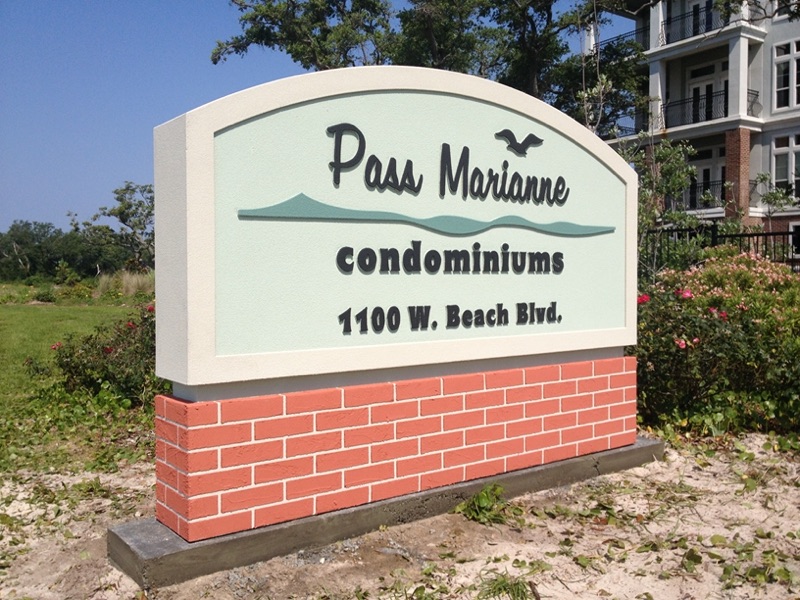Signage Maintenance Tips: Best Practices for Outdoor and Indoor Signs
Navigating through the bustling of a growing city or striding along the quiet serenity of the countryside, you're bound to encounter signs. As a company or business owner, these signs represent far more than simple directions - they embody your brand's first impression. Maintaining excellent condition and visibility of these signages is vital because it speaks volumes about your commitment to your business and customers. Delve into this piece as we dissect practical 'Signage Maintenance Tips: Best Practices for Outdoor and Indoor Signs'. If you've ever felt apprehensive about maintaining your signage or are simply looking for ways to ensure they last longer while retaining their visual appeal, this blog post will be your guide, offering a repository of valuable insights and actionable tips. Let's keep those signs shining!

Preventive Measures for Outdoor Signs
Outdoor signs are constantly exposed to various weather conditions, which can gradually degrade their appearance and functionality. Implementing preventive measures is crucial to maintain the longevity and effectiveness of your outdoor signage. One essential practice is regular inspections; by actively examining your signs, you can identify any signs of damage or wear and tear early on. Additionally, ensuring proper installation and anchoring can prevent signs from toppling over during heavy winds or storms. Taking proactive steps like these can significantly reduce the need for extensive repairs or replacements down the line.
To further protect your outdoor signs from the elements, consider implementing protective coatings and weathering prevention techniques.
Protective Coatings and Weathering Prevention
Applying protective coatings to outdoor signs helps shield them from harsh environmental conditions such as UV radiation, rain, snow, and pollutants in the air. One popular coating option is using clear paint sealants that provide an additional barrier against weathering. These sealants help minimize fading, discoloration, and rust formation on metal signs. Similarly, adding a protective layer of laminate film offers extra protection against abrasions and scratches while maintaining vibrant colors.
It's important to note that not all coating materials work effectively for every type of sign. For instance, if you have a wooden sign, consider treating it with water-resistant stains or varnishes to prevent rotting or warping due to moisture exposure. On the other hand, metal signs may benefit from specialized anti-corrosion coatings to enhance their durability.
Regular maintenance is key to preserving the effectiveness of protective coatings. Periodic cleaning with mild soap and water can remove dirt, grime, and pollutants that could potentially compromise the integrity of the coating. Additionally, inspecting the coating for any cracks or peeling allows for quick repairs before they escalate into larger issues.
By incorporating protective coatings and weathering prevention strategies into your signage maintenance routine, you can significantly extend the lifespan of your outdoor signs while simultaneously preserving their visual appeal and effectiveness.
- According to a study conducted by the FedEx Office in 2018, over two-thirds of consumers have purchased a product or service because a sign caught their eye.
- A survey done by the Sign Research Foundation in 2019, revealed that regular maintenance can prolong the life of a digital sign by up to 50%.
Cleaning Indoor Signs
When it comes to maintaining your indoor signs, regular cleaning is essential to keep them looking fresh and vibrant. Dust, dirt, and fingerprints can accumulate over time, making the signage appear dull and unappealing. To ensure you achieve optimal cleanliness, follow these best practices:
Firstly, start by removing any loose dust or debris from the surface of the sign using a soft brush or microfiber cloth. Be gentle to avoid scratching or damaging the material.
Next, prepare a mild cleaning solution by mixing a small amount of gentle dish soap with warm water. Dip a clean cloth into the solution and wring out any excess moisture. Gently wipe down the surface of the signage, paying close attention to any areas that may require extra cleaning.
Avoid using harsh chemicals or abrasive cleaners as they can cause damage or discoloration to the sign. Additionally, be cautious with excessive water usage on signs made of materials that are sensitive to moisture, such as cardboard or paper.
It's vital to dry the sign thoroughly after cleaning to prevent water spots or streaks from forming. Use a clean, dry cloth or towel to gently remove any remaining moisture. Ensuring proper drying will help maintain the integrity and longevity of your indoor signs.
Appropriate Cleaning Solutions
Using appropriate cleaning solutions is crucial when it comes to maintaining the quality and appearance of your indoor signs. Here are some options for effective yet safe cleaning solutions:
For most common materials like plastic, acrylic, or metal signs, a mixture of mild dish soap and warm water works well. This gentle solution helps remove dirt and grime without causing damage.
Certain materials may require specialized cleaning solutions. For example, glass cleaner can be used on glass signage to achieve streak-free clarity. Be sure to use a non-abrasive cleaner specifically designed for glass surfaces.
In cases where you're unsure about which cleaning solution to use, it's always recommended to test a small, inconspicuous area of the sign first. This way, you can assess the impact of the cleaner on the material and adjust your approach accordingly.
Remember, using inappropriate or harsh chemicals can lead to discoloration or damage to the signage. It's best to err on the side of caution and opt for milder cleaning solutions whenever possible.
By choosing the right cleaning solutions and adopting proper techniques, you can keep your indoor signs looking their best and ensure they make a positive impression on anyone who sees them.
Addressing Color Fading in Promotional Signage
One common challenge faced by businesses when it comes to maintaining their outdoor and indoor signage is color fading. Over time, exposure to sunlight, weather elements, and even indoor lighting can cause colors to fade, resulting in a less vibrant and visually appealing sign. So how can you address this issue and ensure that your promotional signage remains eye-catching?
Firstly, it's important to choose high-quality materials for your signage that are specifically designed to resist color fading. Opt for UV-resistant inks and durable substrates that can withstand the effects of prolonged exposure to sunlight. Additionally, consider using protective coatings or laminates that provide an extra layer of defense against fading.
Furthermore, regular cleaning and maintenance are paramount for preserving the vibrant colors of your promotional signage. Dust, dirt, and grime can accumulate on the surface of the sign over time, causing colors to appear dull. Therefore, make sure to regularly clean your signage using gentle cleaning agents and soft cloths to remove any debris or pollutants.
Now that we have explored ways to address color fading in promotional signage, let's shift our focus to tips on avoiding color displacement.
Tips to Avoid Color Displacement
Color displacement refers to the unintentional shifting or changing of colors in promotional signage, which can negatively impact its overall visual appeal. Here are some practical tips to help you maintain the integrity of the colors in your signs:
- Use color-fast materials: Similar to addressing color fading, selecting materials that are resistant to color displacement is crucial. Ensure that the substrates and inks used in your signage are specifically designed not to bleed or shift when exposed to environmental factors.
- Consider location and lighting: Be mindful of where you place your signs and how they will be illuminated. Direct sunlight, harsh artificial lighting, or extreme temperature fluctuations can all contribute to color displacement. Find suitable locations and lighting conditions that will minimize the risk of color distortion.
- Monitor and replace damaged signage: Regularly inspect your signage for any signs of wear, tear, or damage. If you notice fading or shifting colors, consider replacing or repairing the affected sign promptly to maintain a cohesive and visually appealing display.
For instance, imagine a retail store with window displays featuring vibrant promotional posters. Over time, due to sunlight exposure, the colors in the posters start to fade and become less attractive. By following these tips, the store owner can address color fading and prevent color displacement, ensuring that their window displays continue to capture attention and drive foot traffic.
Safety Protocols in Disposal and Repair
When it comes to signage maintenance, safety should be the top priority. This applies not only to the upkeep of signages but also to their disposal and repair. Proper safety protocols must be followed to ensure the well-being of individuals involved in these processes.
During the disposal of old or damaged signages, it is crucial to handle them with care. Signages may contain hazardous materials such as broken glass, sharp edges, or electrical components. Wearing protective gloves and using designated bins or containers for disposal can minimize the risk of injuries. Additionally, following environmental guidelines for disposing of any harmful substances properly is essential to safeguard both human health and the environment.
For instance, imagine a scenario where outdoor signage has worn out due to weather conditions and needs to be replaced. A maintenance team would need to handle the dismantling process carefully, avoiding any potential risks such as falling debris that could harm either themselves or passersby.
Similarly, safety measures should be taken during the repair of damaged signage. Whether it's replacing a broken bulb or fixing a malfunctioning electrical component, technicians should follow industry-standard safety procedures. This includes turning off power sources before conducting any repairs, wearing appropriate safety equipment like goggles or gloves, and being mindful of potential electrical hazards.
By prioritizing safety protocols during disposal and repair, businesses can create a safer environment for employees, customers, and anyone involved in signage maintenance activities.
Now that we have discussed the importance of safety in signage disposal and repair let's move on to another critical aspect: proper handling of damaged signages.
Proper Handling of Damaged Signages
When signage gets damaged, whether due to vandalism, accidents, or natural causes, it requires careful handling to prevent further harm or injury. Proper handling techniques can help mitigate risks and ensure that repairs are carried out effectively.
One important step in handling damaged signages is to assess the severity and extent of the damage. This evaluation will allow maintenance teams to determine whether repairs can be done in-house or if professional assistance is needed. It's crucial not to overlook any potential structural damage, as it could pose a safety hazard if left unaddressed.
Promptly securing the damaged signage and cordoning off the area with caution tape or barriers can help prevent accidents and injuries. It is also essential to communicate with employees or customers about the situation to ensure their safety.
Consider a scenario where a large indoor signage within a shopping mall has been partially detached due to unforeseen circumstances. Proper handling would involve immediately restricting access to the area, placing warning signs, and informing shoppers about the potential danger until repairs can be made.
When repairing damaged signage, it is recommended to follow manufacturer guidelines or consult professionals who specialize in signage restoration. They have the expertise to handle different types of signages and ensure that necessary repairs are made while maintaining compliance with safety standards.
In conclusion, implementing these signage maintenance tips will not only enhance the longevity of your signs but also ensure they continue to leave a lasting impression on your audience, reinforcing your brand's visibility and professionalism. If you have any questions or need professional assistance with your signage maintenance, please don't hesitate to our team of experts at LQ Signs, at 228-467-1718.




